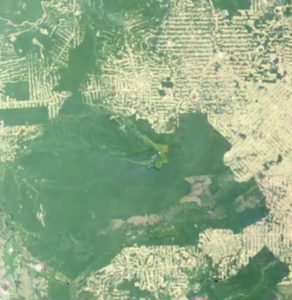In this video, Michele Taufer from the University of Tennessee describes how AI enabled by HPC allows researchers to study wildfire propagation which enhances predictions and mitigation.
One of the projects her team is working on looks at how to integrate aspects of soil moisture with wildfire simulations. This work involves a combination of traditional simulation and data analytics. They start with historical data from satellites that collecting formational soil moisture data every 24 hours. This huge amount of data is imperfect, but somehow the data needs to be analyzed.
HPC today and machine learning/AI enable us to identify those patterns and extract the knowledge. It is important for me that my students have access to platforms that are cutting edge. So the elastic storage is where we gather our data. The data are generated, analyzed at the same time, and then the knowledge extracted by the data is re-injected into the simulation. Our POWER9 system that allow us exactly to do that. Because a combination of GPU, CPU, and interconnect that are very powerful, it allows us to run molecular dynamics simulation and analyze the trajectory that are generated on time and extrapolate knowledge. So IBM is for us, an enabler. It enables us to learn and understand how to further improve our analytical algorithm.
Michela Taufer is an ACM Distinguished Scientist and holds the Jack Dongarra Professorship in High Performance Computing in the Department of Electrical Engineering and Computer Science at the University of Tennessee, Knoxville (UTK). She earned her undergraduate degrees in computer engineering from the University of Padova (Italy) and her doctoral degree in computer science from the Swiss Federal Institute of Technology or ETH (Switzerland). From 2003 to 2004, she was a La Jolla Interfaces in Science Training Program (LJIS) Postdoctoral Fellow at the University of California, San Diego (UCSD) and The Scripps Research Institute (TSRI), where she worked on interdisciplinary projects in computer systems and computational chemistry.
Taufer has a long history of interdisciplinary work with scientists. Her research interests include software applications and their advance programmability in heterogeneous computing (i.e., multi-core platforms and GPUs); cloud computing and volunteer computing; and performance analysis, modeling and optimization of multi-scale applications. She has been serving as the principal investigator of several NSF collaborative projects. She also has significant experience in mentoring a diverse population of students on interdisciplinary research. Taufer’s training expertise includes efforts to spread high-performance computing participation in undergraduate education and research as well as efforts to increase the interest and participation of diverse populations in interdisciplinary studies.






